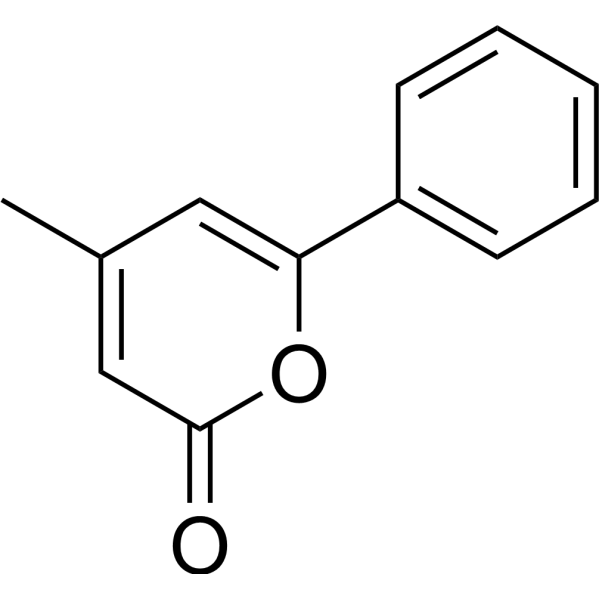
4-methyl-6-phenyl-2H-pyranone
CAS No. 4467-30-5
4-methyl-6-phenyl-2H-pyranone( 4-methyl-6-phenyl-2H-pyranone )
Catalog No. M29252 CAS No. 4467-30-5
4-methyl-6-phenyl-2H-pyranone is derived from Scutellaria baicalensis Georgi and improves mitochondrial functionality to protect astrocytes against hydrogen peroxide-induced toxicity.
Purity : >98% (HPLC)
 COA
COA
 Datasheet
Datasheet
 HNMR
HNMR
 HPLC
HPLC
 MSDS
MSDS
 Handing Instructions
Handing Instructions
| Size | Price / USD | Stock | Quantity |
| 5MG | 45 | Get Quote |


|
| 10MG | 63 | Get Quote |


|
| 100MG | Get Quote | Get Quote |


|
| 200MG | Get Quote | Get Quote |


|
| 500MG | Get Quote | Get Quote |


|
| 1G | Get Quote | Get Quote |


|
Biological Information
-
Product Name4-methyl-6-phenyl-2H-pyranone
-
NoteResearch use only, not for human use.
-
Brief Description4-methyl-6-phenyl-2H-pyranone is derived from Scutellaria baicalensis Georgi and improves mitochondrial functionality to protect astrocytes against hydrogen peroxide-induced toxicity.
-
Description4-methyl-6-phenyl-2H-pyranone is derived from Scutellaria baicalensis Georgi and improves mitochondrial functionality to protect astrocytes against hydrogen peroxide-induced toxicity.
-
In Vitro——
-
In Vivo——
-
Synonyms4-methyl-6-phenyl-2H-pyranone
-
PathwayOthers
-
TargetOther Targets
-
Recptor——
-
Research Area——
-
Indication——
Chemical Information
-
CAS Number4467-30-5
-
Formula Weight186.21
-
Molecular FormulaC12H10O2
-
Purity>98% (HPLC)
-
Solubility——
-
SMILESCc1cc(oc(=O)c1)-c1ccccc1
-
Chemical Name——
Shipping & Storage Information
-
Storage(-20℃)
-
ShippingWith Ice Pack
-
Stability≥ 2 years
Reference
molnova catalog



related products
-
Nudicaucin A
Nudicaucin A is a natural product from Hedyotis nudicaulis.
-
Schisphenlignan I
Schisphenlignan I.
-
Isolappaol C
Isolappaol C is a natural product for research related to life sciences.



 Cart
Cart
 sales@molnova.com
sales@molnova.com


